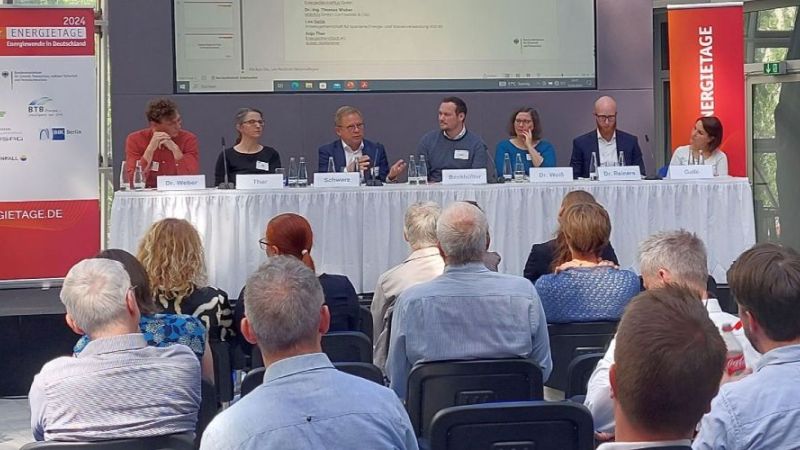 © Fraunhofer ISE
© Fraunhofer ISE
Photovoltaics
New laser contacting process for the production of solar cell contacts
The newly developed method is particularly suitable for temperature-sensitive cell concepts.
Researchers in the joint project C³PO have improved a laser contacting process that is used to produce solar cell contacts. In this project, the "Laser Transfer and Firing" method, or LTF for short, which was developed at the Fraunhofer Institute for Solar Energy Systems (ISE), was optimised and for the first time implemented fully automatically on an industry-oriented plant. This technology is a contacting process for narrow copper contacts with a width of 20 micrometres.
The concrete approach of the LTF method offers an alternative for producing solar cell contacts. Metallic conductor tracks are applied to each solar cell. These are called contact fingers and are needed to conduct the electricity generated in the solar cell. Contact fingers are usually applied by industrial screen printing. In addition to screen printing, where silver paste is applied to the front of the solar cells, there are other methods of creating contacts. For example, alternative and cheaper metals can be used instead of silver. This saves precious metal on the one hand, and on the other hand offers advantages for certain solar cell surfaces. This is where LTF comes in.
Coating and laser process in the LTF method
The LTF method consists of two steps. First, the layout of the contact fingers specific to the solar cell must be transferred to it. For this purpose, a laser printing process is used to apply metal from a coated foil to the solar cell. The narrower the metallic contact finger layout, the less the incoming sunrays are shadowed. The entire process is called "Laser Induced Forward Transfer" (LIFT).
For the LIFT process step in the new LTF plant, the solar cell is first positioned on a vacuum chuck and then moved under a metal-coated carrier foil. The metal is transferred from the latter to the solar cell. In the next step, the metal strip can be transported fully automatically a little further by means of a roll-to-roll system. A new cell surface is approached and the next metal lattice is transferred. In cooperation between ROWO Coating and ISE, specially coated foils were developed for this process step in order to meet the special requirements of the layer system described above. The upscaling of the coating systems developed in this way to industrial coating plants was carried out at ROWO Coating. The company specialises in the coating of flexible substrates from roll-to-roll, using various vacuum coating processes.
Once the carrier substrates have been coated, the contact fingers still have to be produced in the second step of the LTF process. This is done by "Laser Selective Heating" (LSH). In the LSH process step, the metal structures created on the surface of the solar cell are processed into contacts using a laser.
The joint project C³PO is a collaboration between Pulsar Photonics, Soliton, Rena, Rowo Coating and Fraunhofer ISE.
New contact process particularly suitable for heterojunction solar cells
Within the joint project, the LTF process has now been reproduced in a fully automated manner on an industrial plant for the first time. It thereby provides the basis for future developments in this area. LTF already stands out due to the more flexible choice of the metals used and the resulting design options for the layout of the contact fingers. The method is furthermore particularly suitable for solar cells that contain temperature-sensitive layers. This is especially beneficial for heterojunction solar cells in which crystalline silicon wafers are combined with thin-film technology. This cell concept results in high efficiencies, but does not allow high temperatures during production. The laser used in the last step therefore only shapes the contacts without additionally heating the solar cell. This in turn has a positive effect on the efficiency of the solar cell.










